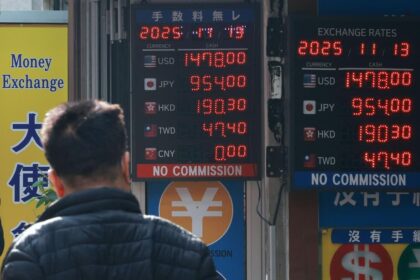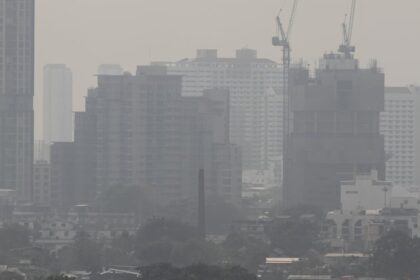Philippines Halts Rice Imports for 60 Days: Protecting Farmers, Shaking Global Trade
In a dramatic move with far-reaching consequences, the Philippines—one of the world’s largest rice importers—has announced a 60-day suspension of rice imports from September 1 to October 30, 2025. The policy, ordered by President Ferdinand Marcos Jr., aims to protect Filipino farmers from plummeting paddy (unmilled rice) prices during the critical harvest season. While the government frames this as a lifeline for local agriculture, the decision is already sending ripples through international rice markets, affecting major exporters like Thailand and Vietnam, and raising questions about food prices, trade relations, and the future of rice policy in Southeast Asia.
- Philippines Halts Rice Imports for 60 Days: Protecting Farmers, Shaking Global Trade
- Why Did the Philippines Suspend Rice Imports?
- Immediate Market Reactions: Shipping Rush and Price Jitters
- Impact on Farmers: Relief or Short-Term Fix?
- Will Rice Prices Rise for Consumers?
- International Fallout: Thailand, Vietnam, and the Global Rice Trade
- Policy Debates: Tariffs, the Rice Tariffication Law, and the Future
- What Happens Next? Monitoring, Adjustments, and Uncertainty
- Broader Implications: Food Security, Farmer Welfare, and Regional Trade
- In Summary
Why Did the Philippines Suspend Rice Imports?
The immediate trigger for the suspension was a sharp decline in farmgate prices for palay. According to the Philippine Department of Agriculture, traders were buying paddy from farmers at just 8–10 pesos per kilogram—well below the production cost of 12–14 pesos. This price collapse was largely blamed on a surge of cheap imported rice flooding the market, making it nearly impossible for local farmers to compete.
President Marcos Jr. announced the suspension after a Cabinet meeting, following a proposal from Agriculture Secretary Francisco Tiu Laurel Jr. The government’s stated goal is to stabilize local prices, prevent further losses for farmers, and ensure that the upcoming harvest season benefits domestic producers rather than being undercut by imports.
Scope and Exemptions
The 60-day ban covers regular milled and well-milled rice, which make up the bulk of imports. Specialty varieties such as basmati, Japanese, and black rice are exempt, reflecting their niche market status and limited impact on local farmers.
Enforcement and Government Rationale
The Bureau of Customs (BOC) has pledged strict enforcement of the ban, ramping up surveillance at ports and warning against smuggling or misdeclaration. Commissioner Ariel F. Nepomuceno emphasized the agency’s commitment to protecting the agricultural sector and maintaining market stability.
The BOC will leave no room for violations and will ensure that this ban is fully enforced. We are committed to upholding the integrity of the rice market and preventing any illegal importation that undermines the President’s decision.
This robust enforcement is part of a broader government effort to support local farmers and respond to what President Marcos called “urgent national concern.”
Immediate Market Reactions: Shipping Rush and Price Jitters
The announcement of the import suspension triggered a flurry of activity among rice traders and importers. With the deadline looming, there has been a rush to bring in as much rice as possible before September 1. Shipping companies are fast-tracking deliveries, and warehouses are bracing for a temporary glut as importers try to beat the ban.
Industry observers warn that this sudden policy shift could disrupt established trade flows and create uncertainty in both domestic and international markets. There are concerns about potential supply shortages and price volatility, especially if the ban is extended or if the harvest falls short of expectations.
Stakeholders are urging the government to clarify the duration and scope of the suspension to minimize market uncertainty and ensure food security. The Department of Agriculture has stated that the policy could be shortened or extended depending on market conditions, adding another layer of unpredictability.
Impact on Farmers: Relief or Short-Term Fix?
For Filipino rice farmers, the suspension offers a much-needed reprieve from depressed prices. By reducing competition from imports, the government hopes to push farmgate prices back above production costs, making rice cultivation more sustainable and profitable.
However, farmer groups and industry experts are divided on whether the measure goes far enough. Some argue that a 60-day pause is insufficient to address the structural challenges facing the sector, such as high input costs, limited access to credit, and vulnerability to climate shocks. Others warn that unless tariffs on imported rice are also raised (they were cut to 15% in 2024 to fight inflation), the benefits to farmers may be short-lived.
Farmer groups argue that the 60-day suspension is insufficient for farmers to recover from losses and are calling for the tariff rate to revert to 35%. They also urge a review of the Rice Tariffication Law, which liberalized rice imports by replacing quotas with tariffs.
According to the Federation of Free Farmers, many producers have been pushed into debt by low prices, and some are questioning whether it is still worth planting rice at all.
Will Rice Prices Rise for Consumers?
One of the biggest concerns for Filipino households is the potential impact on retail rice prices. With imports temporarily halted, the supply of local rice is expected to increase, but so are prices. Industry estimates suggest that both farmgate and retail prices could rise by 1–2 pesos per kilogram during the suspension period.
However, government officials, including Socioeconomic Planning Secretary Arsenio Balisacan, have downplayed fears of runaway inflation. They point to ample domestic stocks, a record harvest, and falling global rice prices as factors that should keep retail prices in check.
Secretary Balisacan said, “The 60-day suspension of rice imports is unlikely to hasten inflation due to lower prices in the world market and an adequate inventory.”
Data from the Philippine Statistics Authority shows that rice inflation has actually been negative in recent months, with average prices for regular milled rice dropping from P50.90 per kilo in July 2024 to P41.31 in July 2025. The government has also set a maximum suggested retail price for imported rice to prevent price gouging.
International Fallout: Thailand, Vietnam, and the Global Rice Trade
The Philippines is not just any rice importer—it is the world’s largest, and its decisions have outsized effects on global trade. The 60-day suspension is already causing concern among major exporters, particularly Thailand and Vietnam.
Thailand: Exporters Scramble for Alternatives
Thai rice exporters, who saw shipments to the Philippines surge by nearly 59% in 2024, now face the prospect of canceled or delayed orders. The Thai Ministry of Commerce is working to find alternative markets, accelerate government-to-government sales (such as a major contract with China), and promote Thai rice at international trade fairs.
Arada Fuangtong, Director-General of Thailand’s Department of Foreign Trade, acknowledged the impact:
Thai rice exporters had reported that the Philippine government’s decision to suspend rice imports would affect exports. Other rice-exporting countries would also face similar impacts, as pending orders might not be delivered before the September 1, 2025, deadline.
Thailand is organizing trade missions to Japan and Hong Kong and encouraging farmers to grow rice varieties that align with international demand.
Vietnam: Fears of Price Collapse and Lost Market Share
Vietnam, the Philippines’ largest rice supplier, is even more exposed. In the first seven months of 2025, the Philippines accounted for 44.3% of Vietnam’s total rice exports. The Vietnam Food Association has asked its trade ministry to challenge the suspension, warning that it could harm local production and push export prices even lower.
Vietnamese traders note that the price of 5% broken rice has already dropped by nearly 30% from a year earlier, and fear further declines if the Philippine market remains closed. The timing is especially sensitive, as Vietnam and the Philippines recently signed a memorandum of understanding on rice trade, and Vietnam’s own harvests are vulnerable to flooding and typhoons.
Global Market Implications
With the world’s top rice buyer stepping back, global rice prices could face downward pressure—at least in the short term. However, if the Philippine harvest disappoints or if the suspension is extended, the country may return to the market with large orders, potentially driving prices back up.
The United States Department of Agriculture (USDA) has already revised its forecast for Philippine rice imports downward by 500,000 metric tons for 2025, but still expects the country to remain the world’s largest importer. The USDA projects Philippine rice imports at 4.9 million metric tons this year, down from an earlier estimate of 5.4 million.
Policy Debates: Tariffs, the Rice Tariffication Law, and the Future
The suspension has reignited debates over the Philippines’ rice import policies. In 2019, the Rice Tariffication Law liberalized imports by replacing quotas with tariffs, aiming to lower prices and ensure food security. However, critics argue that the law has left farmers vulnerable to global price swings and import surges.
In June 2024, the government slashed rice tariffs from 35% to 15% to combat inflation, but this move has been controversial. Some farmer groups and policymakers are calling for tariffs to be restored to their original level, while others warn that higher tariffs could push up consumer prices.
Finance Secretary Ralph Recto has indicated that the government is unlikely to extend the suspension beyond October or to raise tariffs in the near term. Economic Planning Secretary Balisacan has called the 60-day pause a “quick fix” rather than a long-term solution, emphasizing the need for fair tariffs, better buffer stocking, and stronger support for local production.
What Happens Next? Monitoring, Adjustments, and Uncertainty
The government has left the door open to adjusting the suspension period based on market conditions. Agriculture Secretary Francisco Tiu Laurel has stated that the ban could be shortened or extended, depending on price movements and harvest outcomes. The Department of Agriculture will closely monitor supply and demand dynamics among retailers, wholesalers, and importers to maintain market discipline.
Meanwhile, the Bureau of Customs is intensifying its efforts to prevent smuggling and illegal trade, having already seized over PHP 354 million worth of smuggled agricultural goods this year. The government is also urging agencies to crack down on rice hoarding and price manipulation during the suspension period.
For now, the consensus among officials is that the suspension will end as scheduled on October 30, with imports resuming to meet demand after the harvest. However, the situation remains fluid, and further policy changes are possible if market conditions shift unexpectedly.
Broader Implications: Food Security, Farmer Welfare, and Regional Trade
The Philippines’ rice import suspension highlights the delicate balance between protecting farmers, ensuring affordable food for consumers, and maintaining stable trade relations. As climate change, global price volatility, and shifting consumption patterns continue to challenge food systems, governments across Asia are grappling with similar dilemmas.
For the Philippines, the next two months will be a test of whether targeted interventions can stabilize the market without triggering unintended consequences. For exporters like Thailand and Vietnam, the episode underscores the risks of overreliance on a single buyer and the need for diversified markets.
Ultimately, the suspension is a reminder that rice is not just a commodity—it is a political, economic, and cultural staple whose fate affects millions of lives across the region.
In Summary
- The Philippines has suspended rice imports for 60 days (September 1–October 30, 2025) to protect local farmers from falling paddy prices during harvest.
- The ban covers regular milled and well-milled rice, with specialty varieties exempt.
- The move has triggered a shipping rush, price concerns, and uncertainty among traders and consumers.
- Farmers are expected to benefit from higher farmgate prices, but retail prices may rise by 1–2 pesos per kilogram.
- Major exporters like Thailand and Vietnam face lost sales and downward pressure on export prices.
- The USDA has lowered its forecast for Philippine rice imports but expects the country to remain the world’s largest importer.
- Debate continues over rice tariffs and the long-term direction of Philippine rice policy.
- The government may adjust the suspension period based on market conditions, but an extension is considered unlikely.
- The episode highlights the complex trade-offs between farmer welfare, consumer prices, and regional trade stability.












